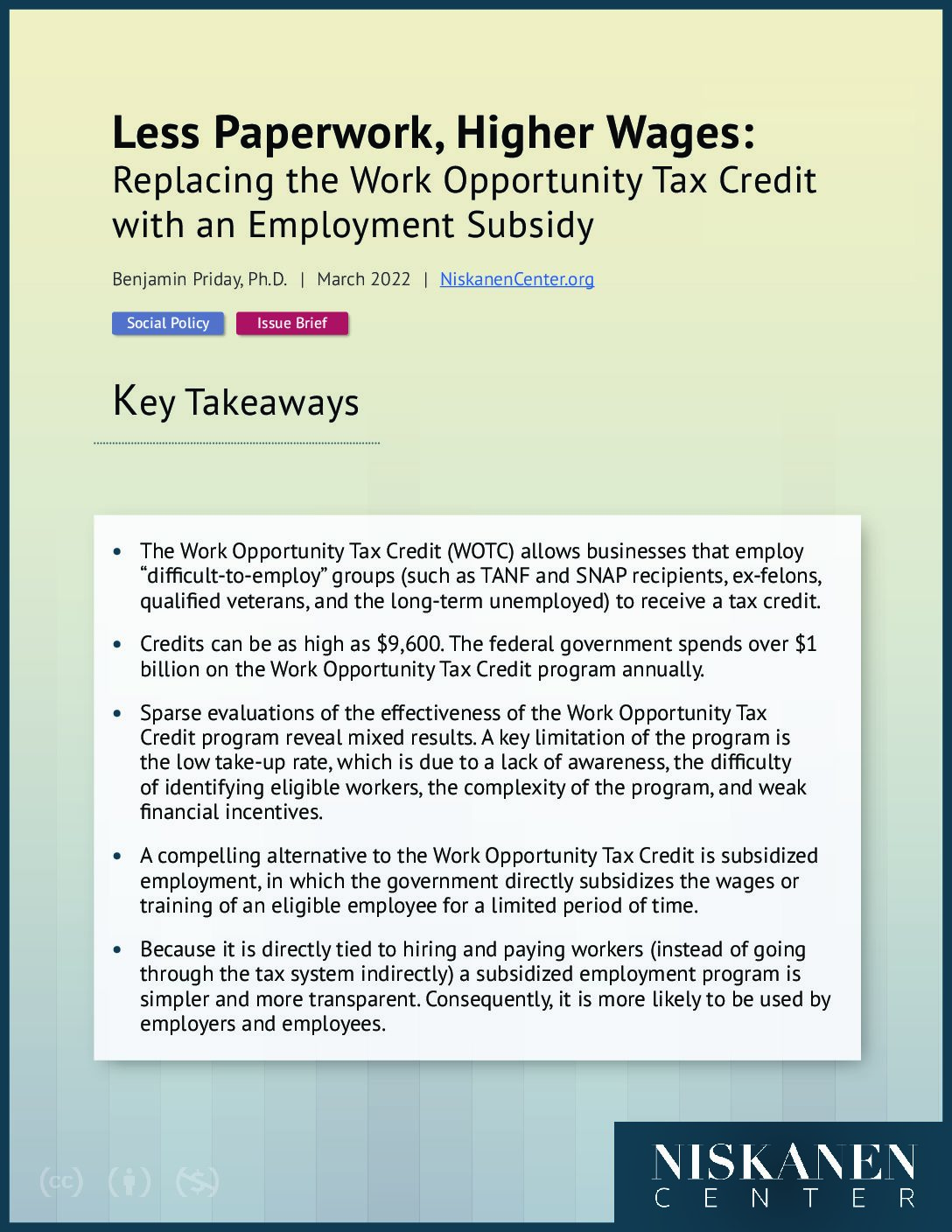Introduction
Long-term unemployment in the United States has grown sharply as a result of the recession caused by the COVID-19 pandemic. The proportion of the unemployed who have been out of work for at least 27 weeks rose from 4.4 percent in April 2020 to 39.3 percent in July 2021, eliminating the gains made since the last recession. This has serious consequences for people’s lives and for the economic recovery. A healthy labor market is a requirement for a market- based economy to thrive.
There are challenges to overcoming chronic unemployment, and the longer someone stays out of work, the harder it is to reenter. Moreover, certain groups of people in the United States experience higher rates of persistent unemployment or job turnover. These“difficult-to-employ”categories include people with disabilities, veterans, long-term social welfare program recipients, and former criminal offenders. People in these groups are traditionally thought to be riskier or more expensive hires compared with other types of applicants, which makes them less attractive to potential employers, notwithstanding laws that ban job discrimination against people with disabilities and veterans.
When economists talk about the labor market, they say that the “supply” of labor comes from current or potential employees (i.e., labor market participants) and the “demand” for labor comes from employers. In the standard framework, when the number of people willing to work (quantity of labor supplied) exceeds the number of jobs available (quantity of labor demanded) at a given wage, we have unemployment (a shortage). A positive unemployment rate at any given time is inevitable: Workers who are transitioning to different jobs or starting their own business can be temporarily unemployed. However, long-term unemployment or a decreasing labor force participation rate – meaning fewer people are actively working or looking for work – is often indicative of a market inefficiency or market failure. It suggests that the labor market is not fully functioning due to frictions, such as those created by geography, need for training, discrimination, and more.
The United States currently uses both supply-side and demand-side subsidies to address the labor market inefficiencies that can lead to long-term unemployment. The Earned Income Tax Credit subsidizes the labor supply of low-income workers by lowering their tax bill or increasing their refund. First implemented in 1975, it has consistently grown – with bipartisan support – to be one of the largest anti-poverty expenditures in the United States.
At the same time, there are a number of state and federal programs aimed at stimulating demand for labor. One such program is the Work Opportunity Tax Credit (WOTC), which allows businesses to apply credits against their taxable income. Unfortunately, take-up of the WOTC is very low. Many firms and individuals that would benefit from using it fail to do so. This is partly due to a lack of knowledge of the program, but it is also due to the administrative burdens involved in accessing the program: Employers must identify workers who are eligible for the WOTC and navigate a complex web of IRS forms to receive the credit. Moreover, a tax credit applied at the company level may not be worthwhile for a specific hiring manager to pursue. An alternative to the WOTC would be direct subsidies to companies that hire individuals from targeted groups. For example, the government could cover all or a portion of wages for a limited time period. A direct subsidy continues to work as a demand-side incentive to hire targeted workers but has the potential to be simpler and more transparent, resulting in a more effective program.
